AWFS Tool News: Say Goodbye to Numb Hands from Sanding
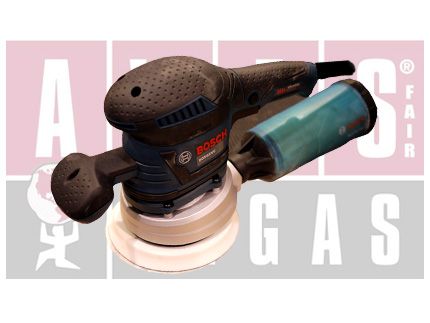
Bosch tackled what is perhaps the biggest complaint most woodworkers have regarding RO sanders: hand fatigue due to vibration.
 I’d much rather use my smoothing plane to prep wood surfaces for finishing. It’s quick and quiet, and makes beautiful shavings that are easy to clean up. But even my best smoother struggles on difficult woods. That’s when I turn to my trusty random orbit sander, which hasn’t met a wood yet that it doesn’t like.
I’d much rather use my smoothing plane to prep wood surfaces for finishing. It’s quick and quiet, and makes beautiful shavings that are easy to clean up. But even my best smoother struggles on difficult woods. That’s when I turn to my trusty random orbit sander, which hasn’t met a wood yet that it doesn’t like.
I don’t look forward to those long sanding sessions, though. I can dull the roar with a good set of earmuffs, but I can’t get away from the vibration. When I’m done, my hands are both numb and shaky and it takes them an hour or so to calm down.
Isolate the Motor
It looks like Bosch has the answer. Its new powerful random-orbit sander, the ROS65VC, isolates the motor from the user with a set of soft internal blocks. Those blocks, plus two wire leads, are the only thing that connects the outer housing to the inner works, and the effect is remarkable. I tried the sander out at the show and felt only the slightest buzz coming through to my hands.
The rest of the sander is a quality operation, too, from the thick microcell pads that come in both 5-in. and 6-in. sizes to the multiple, comfortable hand positions. Also, the 3.3-amp motor is among the most powerful among big rear-handle sanders.
I was also happy to see a user-friendly dust port. It is sized to fit the smaller European vac hoses, like the Bosch and Festool, but the sander comes with an adapter for most sizes of North-American vac hoses. This is extremely important, as Fine Woodworking recommends active dust collection for sanders. It makes the work more efficient and also keeps dangerous fine dust out of the air.
The ROS65VC will be available Sept. 1, at $229 for the sander with either a 5- or 6-in. pad, or $299 for both pad sizes and a nice case.

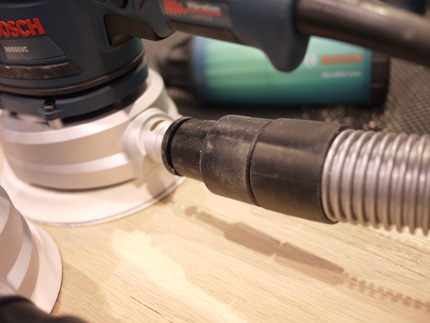
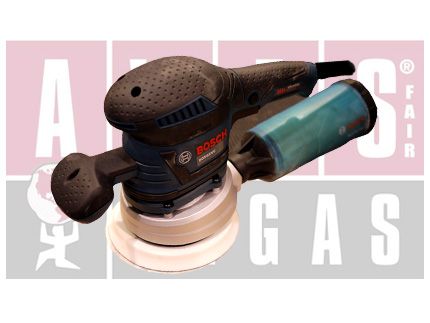
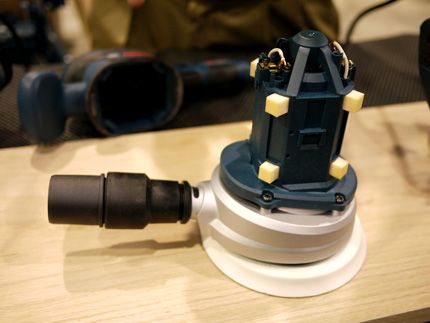
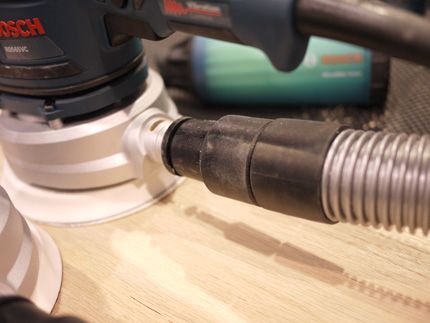
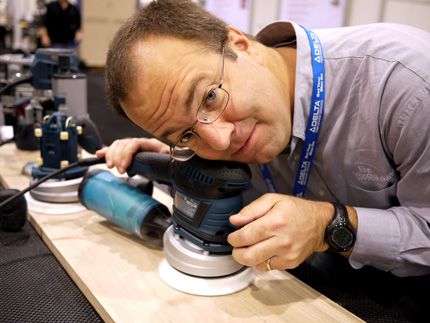


















Comments
I hope the $70 difference in price between the sander with one pad and two doesn't represent the cost of the extra pad - perhaps the case. Can one buy the sander and a separate pad without going for the $70 upgrade? The first time I used the case on my Makita sander was when I got the case out of storage as a coffin, when I threw the sander away after it had served a long life and been rebuilt twice. (A case is never used on a tool that gets daily use in the shop. My Festool cases are in storage.)
The handle sticking out the front will keep you from getting into corners. Can it be removed (and discarded) like the front handle on the Makitas?
How does this compare to the Festool sanders? It looks like it might be better, and also cheaper if you don't have to buy the case.
What is this infatuation with bigger, heavier, more powerful. What ever happened to the right tool for the job. My old DeWalt ROS was getting tired after who knows how many hundreds or thousands of hours of use, so I went to replace it. But DeWalt no longer makes it. They replaced it with a bigger, heavier, more powerful one. Pah! What a disaster that was. Now I can't sand any more boat hulls until my rotator cuff injury heals. Thanks, DeWalt.
So a new, even bigger, heavier, more powerful one from Bosch? Count me out. Doctor's orders.
I"m sure you can remove the front handle, you can see the screw hole in the handle.
As for size and power, I also prefer light weight and small size sanders like the porter cable 390K.
The vibration damping is a wonderful innovation, as it is the one thing I hate most about sanding (apart from the dust).
It can significantly improve comfort and the ability to sand for a long periods.
Too late. I recommend the Dewalt D26456: it is the quietest, cleanest ROS I've used. I bought a Bosch, used it once and returned it before it could work me to death. This model of the Dewalt fits the hand. It is lightweight and easy to guide. HD, Lowe's and Ace only stock cheaper models. This one is about $100. Maybe Bosch should rethink its price for this new model?
Log in or create an account to post a comment.
Sign up Log in